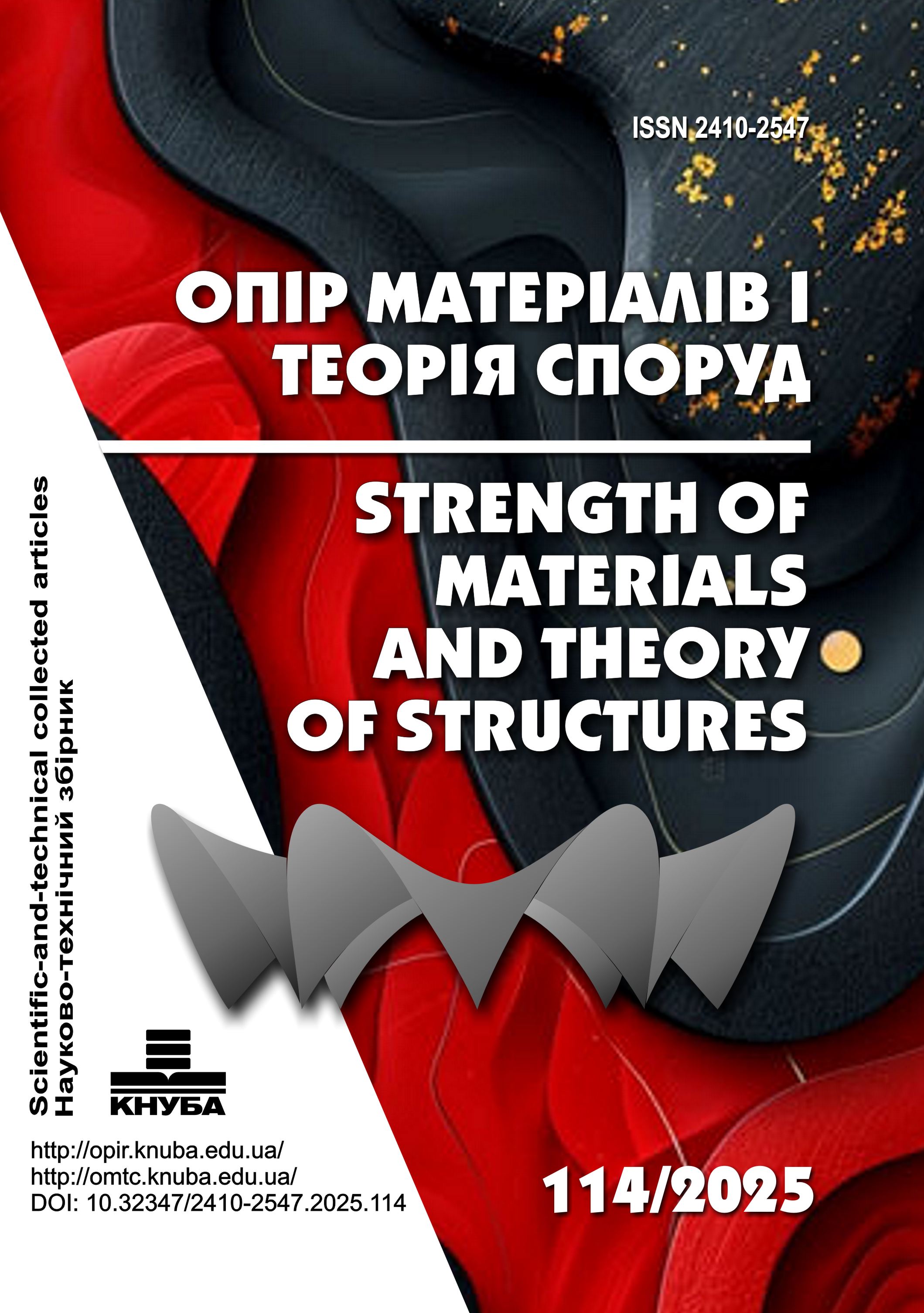Use of hydrophobized soils in oil and gas pipeline construction
DOI:
https://doi.org/10.32347/2410-2547.2025.114.292-298Keywords:
degradation, flooding, hydrophobization, permeability, loamsAbstract
For the first time, systematic experimental and field tests on the effect of hydrophobized soil on the corrosion activity of underground pipelines were carried out in the work. Field, laboratory, and in situ tests conducted over 5, 10, and 15 years on covering insulated pipelines with hydrophobized soils howed that in samples of film coatings that were stored in hydrophobized soils, there lativeelongation was on average 20% higher, and the breaking strength was 15% higher, adhesion - by 10% compared to samples stored in ordinary mineral soils. The transient resistance of insulating coatings of pipe samples covered with hydrophobic oils changed significantly less than that of pipe samples covered with mineralized soil. Due to the improved physical and mechanical properties of hydrophobized soils, in particular, low values of permeability, filtration, water saturation, corrosion activity, swelling, high values of water resistance and adhesion, the transition resistance "pipe-soil" of insulated pipe samples decreasess lightly. It was established that the greatest effect in reducing the corrosion activity of soils (10 times) is observed at temperatures above 10-12oC, when the binder dosage is increased to 10%, and the refore on themostdangerousintermsofcorrosioninthe “hot” sections of the pipelines, for example NS and KS, to increase the reliability of operation, it is necessary to back fill pipelines with hydrophobic soils. As a result of the above experimental studies, a significant decrease in the corrosion activity of hydrophobized soils was established with an increase in the dosage of binders. The experiments, which were carried out according to three methods and according to the loss of mass of steel samples, specific electrical resistance and pole density of the cutting current, show edidentical results – the corrosion activity decreases from high to very low. According to the classification of regulatory documents. Field tests was α= 0.10 1/year, and for ordinary soils, according to regulatory documents, it is 0.125 1/year. Thus, the service life of the insulation increases by approximately 35-50% when the pipeline is sprinkled with hydrophobic soils.
References
V.D. Makarenko, S.I. Grachev, N.N. Prokhorov і іn. Svarka i korroziya neftegazoprovodov Zapadnoj Sibiri (Welding and corrosion of oil and gas pipelines in Western Siberia)// Kiev: Naukova dumka. -1996.-549 s.
Babin L.A., Bykov L.I., Rafikov S.K. Iskusstvennoe uluchshenie gruntov v praktike truboprovodnogo stroitel'stva (Artificial improvement of soils in the practice of pipeline construction) //Kiev: Naukova dumka. – 1990.-154 s.
Spektor Yu.I., Babin L.A., Valeev M.M. Novye tekhnologii v truboprovodom stroitel'stve na osnove melioracii gruntov (New technologies in pipeline construction based on soil reclamation) // Kiev: Naukova dumka.- 1996. – 208 s.
Ishmuhametov I.T., Isaev S.L., Lur'e M.V. Truboprovodnyj transport nefteproduktov (Pipeline transportation of petroleum products) // Kiev: Naftova promyslovist', 1999. – 399 s.
Mironov D.V., Mironov V.V., Zemenkov Yu.A., ShapovalA.F. Patent №2191945. Sposob prokladki truboprovoda na gruntakh so slaboj nesushchej sposobnost'yu (Method of laying pipelines on soils with weak bearing capacity) // Zaregv. gos. reestreizobret. 27.10.2002.
Sergeev B.I., Stepanov P.M., Shumakov B.B. Myagkie konstrukcii v gidrotekhnicheskom stroitel'stve (Soft structures in hydraulic engineering) // Kiev: Naukova dumka, 1984.- 101 s.
Andreikiv O.Ie., Nykyforchyn H.M., Tkachov B.I. Mitsnist i ruinuvannia metalichnykh materialiv i elementiv konstruktsii u vodnevomisnykh seredovyshchakh (Strength and destruction of metallic materials and structural elements in hydrogen-containing environments) // Fizyko-mekhanichnyiinstytut: - Pidred. V.V. Panasiuka, NAN Ukrainy, Fizyko-mekhanichnyi instytut im. H.V. Karpenka. - Lviv: Prostir-M, 2001. - S. 248-286.
Tkachov V.I. Problemy vodnevoi dehradatsii metaliv (Problems of hydrogen degradation of metals) // Fiz.-khim. Mekhanika materialiv. -2000.--№4.—S. 7-14.
ShvachkoV.I. Makromekhanicheskie aspekty obratimoj vodorodnoj khrupkosti (Macromechanical aspects of reversible hydrogen embrittlement) // Fiz.-khim. Mekhanika materialov. -2000.- №4.-S. 36-40.
Makarenko V.D., Kryzhanivskyi Ye.I., Chernov V.Yu. Problemy koroziinoi stiikosti promyslovykh truboprovodiv (Problems of corrosion resistance of industrial pipelines )// Naftova i hazovapromyslovist. -2002.-№6.-S. 42-44.
Samoilenko M.I. Funktsionalna nadiinist truboprovidnykh transportnykh system (Functional reliability of pipeline transportsystems) // Kharkiv: KhNAMP. – 2009.-184 s.
Nasonina N.H., Antonenko S.Ie. Analiz poshkodzhenosti vodoprovidnykh i kanalizatsiinykh merezh (Analysis of damage to water supply and sewagenet works) // Suchasne promyslove ta tsyvilne budivnytstvo. -2019.-Tom 15.-№1.- S. 23-34.
Makarenko V.D., HotsV.I., ArhatenkoT.V. i in. Doslidzhennia avariinykh truboprovodiv (Investigation of emergency pipelines) // Problemy vodopostachannia, vodovidvedennia ta hidravliky, vyp. 42. -2023.-S. 49-58.
Bridu A., Lafrans M., Provu I. Razrabotka novykh sortov stali s povyshennymi kharakteristikami dlya transporta kislogo gaza I nefti (Development of new grades of steel with improved characteristics for the transport of acid gas and oil) // Neftegaz-Franciya –Yuzichor As'e, 1986. -19 s.
A.I. Radkevich, R.K. Melekhov, YA.I. Spektor, R.V. Yacenko. Issledovanie otechestvennykh I zarubezhnykh nizkolegirovannykh serovodorodostojkikh stalej dlia neftegazoprovodnogo oborudovaniya (Research of domestic and foreign low-alloy hydrogen sulfide-resistant steels for oil and gas pipeline equipment) // Mezhotraslevaya nauch-konf. Konstrukcionnyestali – progressivnyeprocessyproizvodstvaiehffektivnost' primeneniya. Dnepropetrovsk, 1995. – S. 58-59.
Vasylenko I.I., Shulte O.Iu., Radkevych O.I. Vplyv khimichnoho skladu I tekhnolohii vyrobnytstva stalei na yikh chutlyvist do vodnevohotrishchynoutvorennia ta sirkovodnevohokoroziinohoroztriskuvannia (The influence of the chemical composition and production technology of steels on their sensitivity to hydrogen cracking and hydrogen sulfide corrosion cracking )// Fiz-khimmekhanikamaterialiv. -1990.-№4.-S.8-22
O. Chaplia, O. Radkevych, O. Piasetskyi, Ya. Spektor. Porivnialnyi analiz koroziino-mekhanichnykh vlastyvostei vitchyznianoi trubnoi stali 20YuCh z inozemnymy analohamy (Comparative analysis of corrosion-mechanical properties of domestic pipesteel 20YuCh with foreign analogues) // Mashynoznavstvo. -1999.-№8.- S. 52-56.
Tyson W.R. Hydrogen Embrittlement and Hydrogen Dislocation Interactions // Corrosion. - 1980. Vol. 36, No. 8. - Рр. 441-443.
Maksymov S.Yu., Kindrachuk M.V., Vynnykov Yu.L. I in. Koroziini ruinuvannia zalizobetonnykh konstruktsii hidrotekhnichnykh sporud (Corrosive destruction of reinforced concrete structures of hydraulic structures ) // Kyiv: NUBiP Ukrainy. – 2021.-292 s.
Downloads
Published
Issue
Section
License

This work is licensed under a Creative Commons Attribution 4.0 International License.
Authors retain copyright and grant the journal right of first publication with the work simultaneously licensed under a Creative Commons Attribution License that allows others to share the work with an acknowledgement of the work's authorship and initial publication in this journal.

